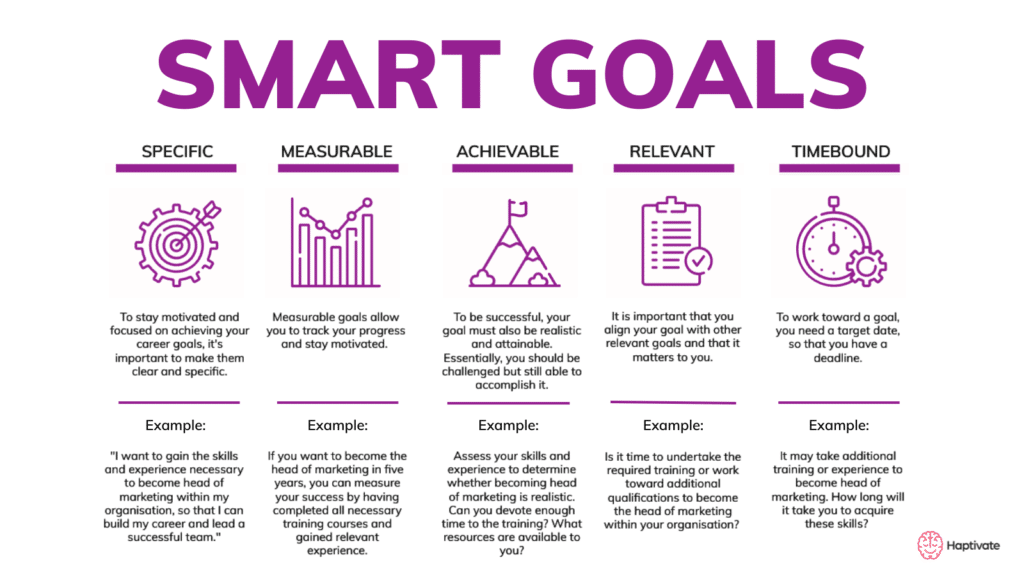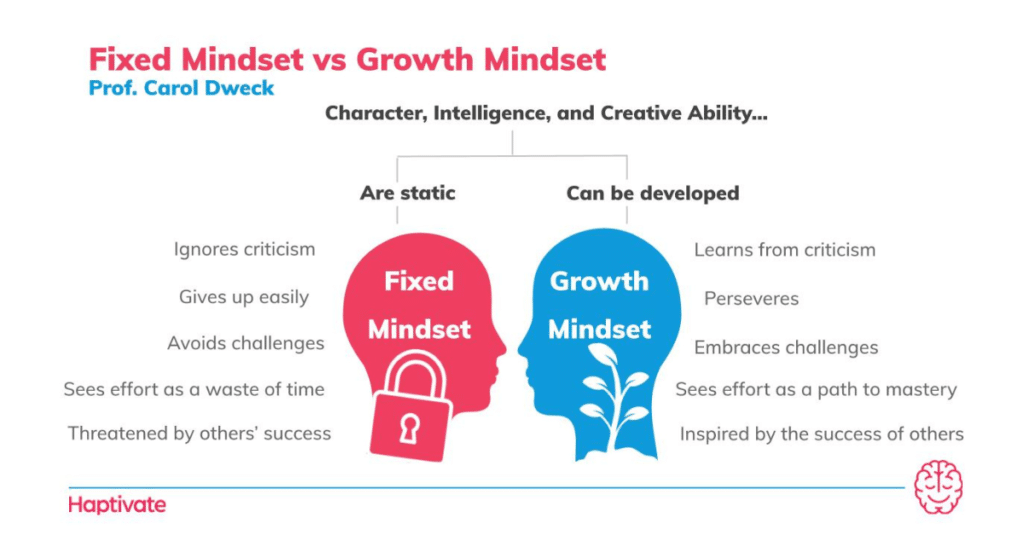Power of Purpose: How to Set Team Goals for a Happier, High-Performing Workplace

Do you ever wonder why some teams consistently outperform others, even when they’re of comparable size, expertise, and resources? It’s a question that perplexes many team leaders. You might have tried numerous strategies to enhance your team’s productivity and motivation, but if you’re missing one crucial element, you’re likely to hit a wall. That element is effective team goals.
Effective team goals should align with broader company objectives to ensure that every team member’s efforts contribute to the organization’s strategic aims.
Team goal setting is more than just a corporate buzz phrase; it’s a powerful tool that, when used effectively, can transform the dynamics of a workplace.1 It provides a roadmap, keeps everyone on the same page, and fosters a sense of purpose2 and camaraderie. But most importantly, it serves as potent fuel for motivation,3 a catalyst for productivity,4 and a compass for the direction of collective efforts.
In this blog, we’re going to explore the art and science of team goal setting. With a blend of scientific insight and practicality, we’ll delve into why setting goals matter, how they impact the brain, and how you can master them to boost your team’s performance.
Whether you’re a seasoned pro or a novice in team leadership, this journey into the neuroscience of goal setting is certain to provide some food for thought. So, get ready to set, align, and succeed with Haptivate’s guide to mastering team goal setting!
Table of Contents
Understanding the Neuroscience of Team Goal Setting
When you picture the human brain, you might imagine it as a complex, mysterious, and somewhat daunting system of electric pulses and chemical exchanges. While that’s not inaccurate, you’d be surprised to know that our brains are surprisingly cooperative when it comes to goal setting. You might say that our brains are wired for achievement!
So, let’s take a quick neuroscience tour to understand why goal setting is such a powerful tool…
Brains Love Goals
Yes, you heard it right – our brains love goals! Neurologically, the anticipation of achieving a goal triggers the release of dopamine, a neurotransmitter that regulates motivation and feelings of pleasure.5
When a goal is set, especially one that is challenging yet achievable, it creates a ‘dopamine hit’. This chemical reward motivates us to work towards achieving our goals, helping to maintain focus and drive even in the face of obstacles.
Goals Give Us Direction
Setting clear, well-defined goals activates the brain’s executive functions, particularly the prefrontal cortex, which is responsible for decision-making and goal-directed behaviour.6
When a team is given a specific goal, it provides a clear direction for these cognitive processes to work towards. This not only boosts efficiency but also reduces cognitive load by eliminating ambiguity and indecision.
Goal Achievement and Satisfaction
Our brains also experience a rush of satisfaction upon achieving a goal. This is primarily driven by the release of endorphins and serotonin, neurotransmitters associated with feelings of happiness and wellbeing, which are often triggered by achieving a measurable goal.
It’s this positive reinforcement that makes goal setting such an effective tool for motivation and engagement.7
A research study published in the Journal of Applied Psychology found that teams that set challenging, specific goals performed 20% better than teams that were simply told to “do their best”. 8
This not only underscores the importance of goal setting but also highlights how the specificity and level of challenge inherent in goals can enhance team performance.

The Pitfalls of Poor Team Goal Setting
In our enthusiasm to embrace team goal setting, we must be mindful of the potential pitfalls that can undermine our best efforts.
Poorly set team goals can be like a poorly planned road trip: you may have your snacks ready and playlist curated, but without a clear destination or accurate map, you’ll end up driving aimlessly, wasting fuel, and sapping everyone’s enthusiasm.
Let’s dive into some common pitfalls of poor goal setting…
1. Ambiguity
Team goals that are vague or ambiguous can lead to confusion and frustration. The lack of clarity fails to provide a definitive direction for the team and allows room for different interpretations, resulting in disjointed efforts and diminished motivation.9
Remember, the brain loves specificity – without it, you’re sending your team off on a wild goose chase.
2. Sky-High Goals
Setting overly ambitious or unrealistic team goals can lead to disappointment and burnout.10 While it’s important to challenge your team, the goals should still be within reach. Otherwise, the perceived impossibility of achieving the goals can demotivate team members, leaving them feeling like they’re trying to catch lightning in a bottle.
3. Lack of Buy-In
Team goals imposed top-down with little to no input from the team can result in a lack of commitment.11](LINK 1) For teams to get on board, everyone needs to feel that they’ve had a say and that their contributions are valued.
In addition to team goals, supporting personal goals through individual check-ins and performance reviews can enhance personal development and motivation.
Not including team members in the goal-setting process is damaging to their sense of autonomy which is a key pillar of personal motivation.12
4. Ignoring the Follow-Up
Setting team goals without a system for monitoring progress and providing feedback is a missed opportunity. It’s important to check in regularly, celebrate small wins, and recalibrate as needed.13 After all, what’s the point of setting goals if no one bothers to track them?
These common missteps can seriously compromise the effectiveness of your goal-setting efforts. They can lead to disengagement, frustration, and even increased stress – the very opposite of what we’re trying to achieve.
But fear not, we’re not here to rain on your goal-setting parade. In the next section, we’ll explore strategies to set practical team goals, steering clear of these pitfalls, and making your team’s journey towards success a smoother ride.

The Five-Step Method to Setting Team Goals
The Five-Step Method to Setting Team Goals
So, we’ve explored the pitfalls that are best avoided. But simply knowing what not to do isn’t enough! Crafting inspiring team goals is an art and a science.
Luckily, we have a five-step method to help you navigate this process, grounded in both motivational theory and practical application.
Step 1: Gain Insight into the Business Goals
A firm understanding of your organisation’s overarching goals is a crucial first step. Ensure that you, as well as your team members, have a comprehensive grasp of these goals.
Arrange a meeting with your own manager if necessary, and then convey these goals to your team. Remember, this isn’t just a data-sharing exercise – it’s a time to inspire and rally your team around a shared vision.
Step 2: Bridge the Gap between team efforts and business goals
Once the business objectives are clear to everyone, it’s time to illustrate how your team’s work contributes to this bigger picture. Collaborate with your team to identify the areas where your collective efforts can make the most significant impact.
Here are some questions to facilitate your team discussion:
Which aspects of the company’s strategy can our work contribute to?
Where can we, as a team, make the most substantial impact?
What Key Performance Indicators (KPIs) does our work directly influence?
Which KPIs do we indirectly contribute to?
What sub-metrics of company KPIs are we responsible for?
Answering these questions will help sharpen your focus, making it easier to set meaningful team goals and prioritise initiatives effectively.
Step 3: Craft SMART goals
Now that you’ve clarified your team’s role within the broader business strategy, it’s time to draft the initial version of your team goals.
If you’ve encountered goal setting before, you’ve likely come across the term SMART goal, which stands for Specific, Measurable, Achievable, Relevant, and Time-bound. It’s a time-tested formula that ensures goals are clear, trackable, and realistic, fostering motivation and engagement.14
Here’s what SMART goals look like in action…
Specific: Specific goals provide clear direction. They answer the questions: Who is involved? What needs to be accomplished? Where will it take place? When does it happen, and why is it important? By eliminating ambiguity, specific goals ensure that every team member understands exactly what’s expected, reducing miscommunication and increasing efficiency.
Measurable: Goals need to be measurable so that progress can be tracked and evaluated over time. Measurable goals answer the question: How will we know when it’s accomplished? They establish concrete criteria for success, making it clear when a goal has been achieved. This can enhance motivation by providing a clear path to victory and facilitating the celebration of ‘small wins’ along the way.
Achievable: Goals should be challenging to stimulate growth and engagement, but they also need to be realistically achievable. Attainable team goals balance ambition with feasibility, inspiring teams to reach for the stars while keeping their feet firmly on the ground. They are within the team’s ability, resources, and constraints, preventing feelings of overwhelm and demotivation.
Relevant: Relevant goals align with broader organisational objectives and the team’s responsibilities. They answer the question: Why is this goal important to our team and the organisation? By ensuring relevance, you foster a sense of purpose and contribution, enhancing intrinsic motivation and commitment to the goal.
Time-bound: Time-bound goals provide a clear timeframe for completion, creating a sense of urgency and focus. A time-bound component also allows for planned review periods, ensuring regular feedback and progress assessment.

Step 4: Seek Feedback, Refine, and Adapt as Necessary
Share your initial goals with your team and your manager, and solicit their input. Their insights can help refine your goals and ensure they truly align with the team’s capabilities and the business reality.
Regularly tracking progress towards goals helps keep everyone engaged and committed to achieving the goals.
Regularly review and adapt your goals in response to changes and feedback. This ongoing process keeps everyone engaged and committed to achieving the goals.15](LINK 2)
t[/efn_note]
Step 5: Foster Alignment with Continuous Communication
Open and frequent communication is vital for maintaining alignment around team goals, especially in a remote work setting.16 Schedule regular team meetings where different team members present progress towards goals.
Ensure everyone understands the Key Performance Indicators (KPIs) and targets, and has access to the necessary tools to track these metrics.
It’s also important to dedicate time to discuss upcoming work, identify potential obstacles, manage workloads, and prioritise collectively. Maintain a flexible approach to accommodate unexpected changes and ensure quality work without overloading anyone.
By following this five-step method, you’ll set your team on the path to success Remember, the team goal-setting process and working towards goals can be as impactful as achieving them.
So, embrace the journey, and watch as your team transforms into a more resilient, motivated, and high-performing unit.
Examples of Team Goals:
Successful team goals are those that are clear, specific, and aligned with the broader objectives of the organization.
- Improve customer satisfaction score: Increase customer satisfaction scores from 85% to 90% by implementing a new customer feedback system by the end of the second quarter.
- Enhance team collaboration: Launch a bi-weekly virtual team-building activity within the next month to foster better team collaboration and boost the team’s “Collaboration With Peers” score in the next employee engagement survey.
- Increase team productivity: Boost team productivity by 10% over the next six months by introducing new project management software and providing relevant training to all team members.
- Enhance client communication: Improve our client communication score from 3.5 to 4 (out of 5) on client surveys by revising our communication protocol and providing communication skills training to our team over the next three months.
- Improve workplace wellbeing: Implement a monthly mental health awareness workshop and aim to increase our “Workplace Wellbeing” score by 2 points in the next employee wellness survey.
- Boost website conversion rates: Increase website conversion rates by 7% over the next quarter by redesigning the landing page and optimising call-to-action buttons.
- Enhance product quality: Reduce product defects by 5% over the next six months by implementing a new quality assurance protocol.

Overcoming Challenges in Team Goal Setting
Like any organisational endeavour, team goal setting comes with its own set of challenges. Recognising and addressing these issues proactively can greatly enhance the effectiveness of your goal-setting process.
Here are some common challenges and strategies to overcome them:
1. Lack of clarity or understanding
Sometimes, team members may struggle to understand the goals or their role in achieving them.
Solution: Ensure that every goal follows the SMART framework, making them clear and easy to understand. Hold dedicated Q&A sessions to address any confusion, and maintain open lines of communication for any future queries.
2. Resistance to change or new goals
Individuals often resist change, especially if they don’t see the relevance or value in the new team goals.17
Solution: Involve team members in the goal-setting process to enhance buy-in. Make sure that the relevance of each goal is communicated clearly, tying them back to broader organisational objectives and individual roles.
3. Fear of failure
The pressure of achieving goals can sometimes lead to fear of failure, which can be paralysing.18
Solution: Foster a growth mindset in your team, emphasising that setbacks are opportunities for learning, rather than embarrassing failures. Regularly celebrate effort, progress, and resilience to help reduce the fear associated with pursuing challenging goals.
4. Neglecting to track progress
Without regular check-ins, teams can lose sight of their goals and fail to adjust their strategies in time.19
Solution: Establish a consistent schedule of progress reviews. Use these sessions to provide feedback, recognise achievements, and recalibrate goals as necessary.
5. Lack of motivation or engagement
If team members don’t feel personally invested, they may lack motivation to work towards the goals.20](LINK 1)
Encouraging team members to set their own goals can enhance their personal investment and motivation.
Solution: Enhance engagement by promoting participation in goal-setting. Regularly celebrate achievements to boost morale and reinforce the connection between effort and success.
By addressing these challenges proactively, you can enhance the effectiveness of your team’s goal-setting process, leading to increased engagement, productivity, and overall team wellbeing.
Remember, every challenge presents an opportunity for growth – both for the team as a whole and for each individual member. So, embrace the hurdles and keep moving forward towards your goals.
Activating You Team Goals: Crafting a Collaborative Action Plan
Activating You Team Goals: Crafting a Collaborative Action Plan
Turning your team goals into reality requires not just a clear vision but also an action plan.
This plan is best crafted collectively since your team members are the ones who intimately understand their capabilities and how these align with your shared objectives. Engage your team in a brainstorming session to devise strategies for meeting your goals and determine which initiatives you’ll undertake.
Here’s some guidance and what you should cover:
1. Setting the Stage: Begin the meeting by presenting the agenda. Recap the team goals and tie them back to the broader business objectives to give everyone a clear understanding of their significance.
2. Q&A: Allocate time for questions and clarifications. This ensures that everyone is on the same page before moving forward.
3. Idea Generation: Ask each team member to jot down their ideas on post-its (or on a shared virtual board if you’re remote) linking them to the respective team goals they address.
4. Idea Presentation: Invite team members to present their ideas, explaining their choices and the ways they envisage these contributing to the team goals.
5. Idea Clustering: Group similar ideas together to identify common themes and potential synergies.
6. Voting and Prioritising: Let team members vote for their top 1-3 ideas using a prioritisation matrix. This could be based on factors such as customer impact versus team investment.
7. Reflection and Check-In: End the meeting by asking each person to share a quick reflection on the selected initiatives and how they feel about moving forward with them.
Crafting an action plan together fosters a sense of ownership and engagement among team members, making them more invested in achieving the goals.21
Remember, these goals represent shared aspirations, and their successful realisation lies in the collaborative effort.

What to Do When Goals Aren’t Met
Even with the best intentions and efforts, there may be instances when your team falls short of its goals. As disheartening as this may be, remember that these moments present valuable learning opportunities.
As a team leader, your role isn’t separate from the team’s collective effort; you’re a key part of it. Now’s the time to unify your team and tap into its collective wisdom.
Host a team retrospective
Hold a team retrospective to reflect not only on the barriers that hindered your success but also on ways to apply these learnings to your future work. Turn this setback into a stepping stone for improved strategies and work methods.
Consider these reflective questions with your team:
What hurdles hindered our success as a team?
Were there external factors at play that we couldn’t control?
Did we overlook any potential challenges that we could have anticipated?
What lessons can we glean from this experience?
How can we apply these insights to our future endeavours?
Create a safe space for honest reflection
Create an environment where team members feel at ease sharing their honest thoughts. This openness will enable your team to move forward effectively. One approach to fostering such an atmosphere is by conducting an anonymous survey.
Team members can respond to these questions without fear of judgement or conflict, thereby providing candid and potentially insightful feedback.
Remember, goals are as much about the journey as they are about the destination. Even if you didn’t hit your mark this time, the progress made and lessons learned along the way are invaluable for future success. Take this opportunity to regroup, reassess, and bounce back stronger.
The Positive Ripple Effect of Successful Team Goal Setting
Successful goal setting does more than just help your team reach specific objectives. When done effectively, it creates a positive ripple effect that extends well beyond the achievement of the immediate goal. Here’s how:
Boosts team morale and motivation
Accomplishing goals gives your team a sense of achievement and satisfaction, increasing their confidence and motivation.22 As they celebrate their accomplishments, the team spirit is bolstered, resulting in a more positive and energetic work environment.
Enhances individual and team skills
The journey towards achieving goals often requires learning new skills or honing existing ones. As a result, each team member can become more competent and versatile, contributing to the overall performance and adaptability of the team.23
Fosters a growth mindset
Effective goal setting encourages a growth mindset – the belief that skills and abilities can be developed through dedication and hard work.24 This mindset can permeate throughout the organisation, fostering an environment of continuous learning and improvement.

Improves communication and collaboration
Goal setting necessitates clear and open communication, reinforcing these skills within your team. Additionally, working together towards shared goals can enhance cooperation and teamwork, creating a more collaborative culture.25
Aligns team efforts with organisational objectives
When team goals are aligned with organisational objectives, every achievement contributes to the larger mission. This can create a sense of purpose and direction for your team, motivating them to contribute their best efforts.26
Increases resilience
The challenges encountered and overcome during the goal-setting process help to build resilience.27 This not only benefits the current goals but also prepares your team to effectively navigate future challenges and stressors.
Promotes a positive cycle of success
Success breeds success. Achieving one goal can boost confidence and motivation, setting the stage for the pursuit and achievement of future goals.28 This positive cycle can lead to continuous growth and success for your team and your organisation.
In summary, successful goal-setting can result in a variety of positive outcomes, creating a ripple effect that can significantly enhance team performance, wellbeing, and organisational success.
So, embrace the power of effective team goal-setting and start creating your own positive ripples today!
Get free access to wellbeing resources, news and research
Get access to the exclusive Haptivate Wellbeing Resource Hub and stay up to date with all the latest wellbeing at work research, tools and tips by joining our monthly newsletter. We promise not to share your data or spam you with irrelevant information 🙂
That’s a wrap!
Effective goal-setting isn’t just about ticking off targets; it’s a valuable method for creating a thriving, motivated, and resilient workforce. Understanding the neuroscience behind goal setting, avoiding common pitfalls, and implementing a science-backed approach can significantly enhance the effectiveness of your goal-setting process.
Moreover, the journey towards achieving goals brings about growth, learning, and positive transformation that extends far beyond the goals themselves, creating a ripple effect of success.
However, embarking on this journey requires careful planning, consistent effort, and a dedication to fostering a culture of growth and achievement. It’s not always easy, but the rewards – for individuals, teams, and the entire organisation – are well worth it.
So are you ready to supercharge your team’s performance and wellbeing with effective, science-backed goal setting? Haptivate can help!
Our expert-led workshops are tailored to your organisation’s unique needs and challenges, providing your team with the skills and strategies they need to thrive. Don’t wait – start creating a happier, more productive workplace today!
Click here to learn more about Haptivate’s workshops or contact us to schedule a consultation.
Remember, your team’s potential is limitless. Harness it through effective goal setting, and watch as your organisation reaches new heights of success. Happy goal setting!
Get free access to wellbeing resources, news and research
Get access to the exclusive Haptivate Wellbeing Resource Hub and stay up to date with all the latest wellbeing at work research, tools and tips by joining our monthly newsletter. We promise not to share your data or spam you with irrelevant information 🙂
That’s a wrap!
Effective goal-setting isn’t just about ticking off targets; it’s a valuable method for creating a thriving, motivated, and resilient workforce. Understanding the neuroscience behind goal setting, avoiding common pitfalls, and implementing a science-backed approach can significantly enhance the effectiveness of your goal-setting process.
Moreover, the journey towards achieving goals brings about growth, learning, and positive transformation that extends far beyond the goals themselves, creating a ripple effect of success.
However, embarking on this journey requires careful planning, consistent effort, and a dedication to fostering a culture of growth and achievement. It’s not always easy, but the rewards – for individuals, teams, and the entire organisation – are well worth it.
So are you ready to supercharge your team’s performance and wellbeing with effective, science-backed goal setting? Haptivate can help!
Our expert-led workshops are tailored to your organisation’s unique needs and challenges, providing your team with the skills and strategies they need to thrive. Don’t wait – start creating a happier, more productive workplace today!
Click here to learn more about Haptivate’s workshops or contact us to schedule a consultation.
Remember, your team’s potential is limitless. Harness it through effective goal setting, and watch as your organisation reaches new heights of success. Happy goal setting!

Aysha Frost
Digital Marketing
Get in touch
Other articles that may interest you…
- https://d1wqtxts1xzle7.cloudfront.net/44281214/Enhancing_the_Benefits_and_Overcoming_th20160331-30923-1dg1jj9-libre.pdf?1459484708=&response-content-disposition=inline%3B+filename%3DEnhancing_the_Benefits_and_Overcoming_th.pdf&Expires=1686649676&Signature=Qx6SUFtsTC30OQJn7kX2ay~LX5vUGSGgrx4egCkcAT1LVlz8-Km3vhpKhyxXrMhtjncSoihqlxO-7aN~tg4rgiy3t3~-AKFMTmzDkrscdsC~LSoUdKaaWCTZlp7hw5dJt6d5PbT9MAPmi-MQQ0l~8dfq3KBp~XKzqu81kU1Wtj5l8bYFokTnL1nb2O5H8wK9fvs8cO7Ng3Yerc8Pzxmzzqa~HUs~wc2nC1QR4q9CPzldmJFmKsJGvYrCk0-nWS01omvdmSFTeljovx1-iqIjoGM3vG8JZ5jfEJDfQvO8vQQX6AlgfyGRLyZv~k2p7GwrNQzG0N6IwnBbScJkATvuMQ&Key-Pair-Id=APKAJLOHF5GGSLRBV4ZA
- https://d1wqtxts1xzle7.cloudfront.net/44281214/Enhancing_the_Benefits_and_Overcoming_th20160331-30923-1dg1jj9-libre.pdf?1459484708=&response-content-disposition=inline%3B+filename%3DEnhancing_the_Benefits_and_Overcoming_th.pdf&Expires=1686649676&Signature=Qx6SUFtsTC30OQJn7kX2ay~LX5vUGSGgrx4egCkcAT1LVlz8-Km3vhpKhyxXrMhtjncSoihqlxO-7aN~tg4rgiy3t3~-AKFMTmzDkrscdsC~LSoUdKaaWCTZlp7hw5dJt6d5PbT9MAPmi-MQQ0l~8dfq3KBp~XKzqu81kU1Wtj5l8bYFokTnL1nb2O5H8wK9fvs8cO7Ng3Yerc8Pzxmzzqa~HUs~wc2nC1QR4q9CPzldmJFmKsJGvYrCk0-nWS01omvdmSFTeljovx1-iqIjoGM3vG8JZ5jfEJDfQvO8vQQX6AlgfyGRLyZv~k2p7GwrNQzG0N6IwnBbScJkATvuMQ&Key-Pair-Id=APKAJLOHF5GGSLRBV4ZA
- [https://journals.aom.org/doi/abs/10.5465/AME.2004.15268727
- [https://psycnet.apa.org/record/1988-28104-001
- https://pubmed.ncbi.nlm.nih.gov/23141060/
- Locke, E. A., & Latham, G. P. (2002). Building a practically useful theory of goal setting and task motivation: A 35-year odyssey. American Psychologist, 57(9), 705–717.
- Kringelbach, M.L. and Berridge, K.C., 2010. The neuroscience of happiness and pleasure. Social research, 77(2), p.659.
- [https://psycnet.apa.org/record/1979-09988-001
- Locke, E. A., & Latham, G. P. (2002). Building a practically useful theory of goal setting and task motivation: A 35-year odyssey. American Psychologist, 57, 705-717
- https://www.researchgate.net/publication/228237553_The_Paradox_of_Stretch_Goals_Organizations_in_Pursuit_of_the_Seemingly_Impossible
- [https://www.i-scholar.in/index.php/oahj/article/view/85382
- Edward L. Deci & Richard M. Ryan (Hg.) (2002) Handbook of Self-Determination Research.
- https://hbr.org/2011/05/the-power-of-small-wins#:~:text=Whether%20they%20are%20trying%20to,making%20progress%20in%20meaningful%20work.
- Doran, G.T., 1981. There’s a SMART way to write management’s goals and objectives. Management review, 70(11), pp.35-36
- [https://qualitysafety.bmj.com/content/27/4/261.abstract
- https://onlinelibrary.wiley.com/doi/full/10.1111/j.1365-2648.2007.04496.x?casa_token=VJ_tUukZSxEAAAAA%3A98VK-aQ8Uqefu5SeT6IvwOPp7i7isIpE3SU-hHuonosTOUW2OVPseR2uUjK0M_Zxo-tnWBg-U2HFGQU
- Oreg, S., Vakola, M., & Armenakis, A. (2011). "Change recipients’ reactions to organizational change: A 60-year review of quantitative studies". The Journal of Applied Behavioral Science, 47(4), 461–524.
- McGregor, H.A., & Elliot, A.J. (2005). The shame of failure: examining the link between fear of failure and shame. Personality and Social Psychology Bulletin, 31(2), 218-231.
- Latham, G. P., & Locke, E. A. (2006). Enhancing the Benefits and Overcoming the Pitfalls of Goal Setting. Organizational Dynamics, 35(4), 332–340.
- [https://www.i-scholar.in/index.php/oahj/article/view/85382
- https://books.google.com.au/books?hl=en&lr=&id=Vnjy9qFf54QC&oi=fnd&pg=PT9&dq=action+plan+increases+team+engagement+&ots=l-ldac-018&sig=ahYKQhg1bb9J14fWyOcqkhopstc&redir_esc=y#v=onepage&q=action%20plan%20increases%20team%20engagement&f=false
- https://www.emerald.com/insight/content/doi/10.1108/13527590610687938/full/html?casa_token=ll1Sx55KZwAAAAAA:oeZKOBomZZVG-kDQ31aO3dKY2Gv-xLNZ6eZXwYyf_U1dou01TNiS84lbV_3sXE_ScTfdBjTEVyzSqRBL0zVm9LRBX4IxUdAfqNUaow5SwVhfS20y-1k
- Locke, E. A., & Latham, G. P. (2002). Building a practically useful theory of goal setting and task motivation. American Psychologist, 57(9), 705.
- Burnette, J. L., O'boyle, E. H., VanEpps, E. M., Pollack, J. M., & Finkel, E. J. (2013). Mind-sets matter: A meta-analytic review of implicit theories and self-regulation. Psychological bulletin, 139(3), 655
- Weldon, E., & Weingart, L. R. (1993). Group goals and group performance. British Journal of Social Psychology, 32(4), 307-33
- https://www.i-scholar.in/index.php/oahj/article/view/85382
- Seery, M. D., Holman, E. A., & Silver, R. C. (2010). Whatever does not kill us: Cumulative lifetime adversity, vulnerability, and resilience. Journal of Personality and Social Psychology, 99(6), 1025-1041.
- Locke, E. A., & Latham, G. P. (2002). Building a practically useful theory of goal setting and task motivation: A 35-year odyssey. American Psychologist, 57(9), 705-717.



